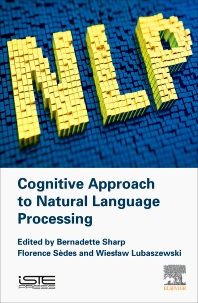Books in Physical sciences and engineering
Books in Physical sciences and engineering
- 2nd Edition
- May 25, 2017
- Michael J Apted + 1 more
- English
- Hardback9 7 8 0 0 8 1 0 0 6 4 2 9
- eBook9 7 8 0 0 8 1 0 0 6 5 2 8

Geological Repository Systems for Safe Disposal of Spent Nuclear Fuels and Radioactive Waste
- 1st Edition
- May 25, 2017
- J. Paulo Davim + 1 more
- English
- Hardback9 7 8 0 8 5 7 0 9 4 8 1 0
- eBook9 7 8 0 8 5 7 0 9 4 8 2 7

Computational Methods and Production Engineering
- 1st Edition
- Volume 2
- May 25, 2017
- George J. Klir
- English
- eBook9 7 8 1 4 8 3 2 8 6 9 7 6

Foundations of Mathematical System Dynamics
- 2nd Edition
- May 25, 2017
- Robert D. Grace
- English
- Paperback9 7 8 0 1 2 8 1 2 6 7 4 5
- eBook9 7 8 0 1 2 8 1 2 6 7 5 2

Blowout and Well Control Handbook
- 1st Edition
- May 24, 2017
- Jovica Riznic
- English
- Hardback9 7 8 0 0 8 1 0 0 8 9 4 2
- eBook9 7 8 0 0 8 1 0 0 9 2 8 4

Steam Generators for Nuclear Power Plants
- 1st Edition
- Volume 200
- May 23, 2017
- English
- Hardback9 7 8 0 1 2 8 1 2 0 9 0 3
- eBook9 7 8 0 1 2 8 1 2 1 9 3 1

Advances in Imaging and Electron Physics
- 1st Edition
- May 23, 2017
- Bernadette Sharp + 2 more
- English
- Hardback9 7 8 1 7 8 5 4 8 2 5 3 3
- eBook9 7 8 0 0 8 1 0 2 3 4 3 3

Cognitive Approach to Natural Language Processing
- 1st Edition
- May 23, 2017
- Valérie David
- English
- Hardback9 7 8 1 7 8 5 4 8 2 3 9 7
- eBook9 7 8 0 0 8 1 0 2 3 4 6 4

Data Treatment in Environmental Sciences
- 1st Edition
- May 23, 2017
- Chellappa Chandrasekaran
- English
- Hardback9 7 8 0 3 2 3 4 4 3 7 1 5
- eBook9 7 8 0 3 2 3 4 4 4 8 5 9

Anticorrosive Rubber Lining
- 1st Edition
- May 23, 2017
- Nigel Brandon
- English
- Paperback9 7 8 0 0 8 1 0 1 1 0 2 7
- eBook9 7 8 0 1 2 8 0 9 7 2 4 3

Solid Oxide Fuel Cell Lifetime and Reliability